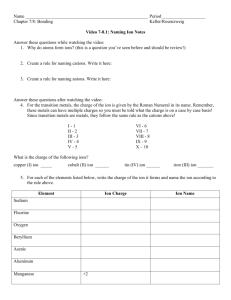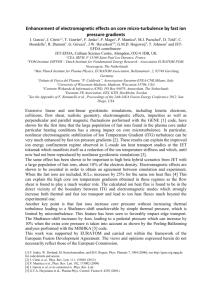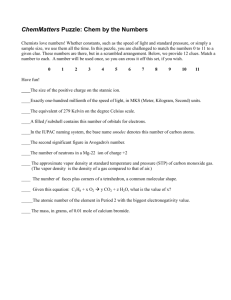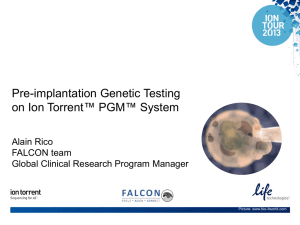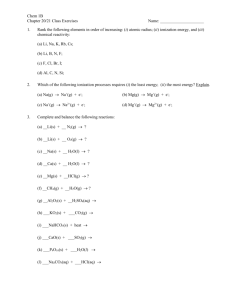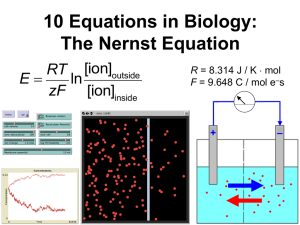CHEM 5181 – Fall 2009 - University of Colorado Boulder
advertisement
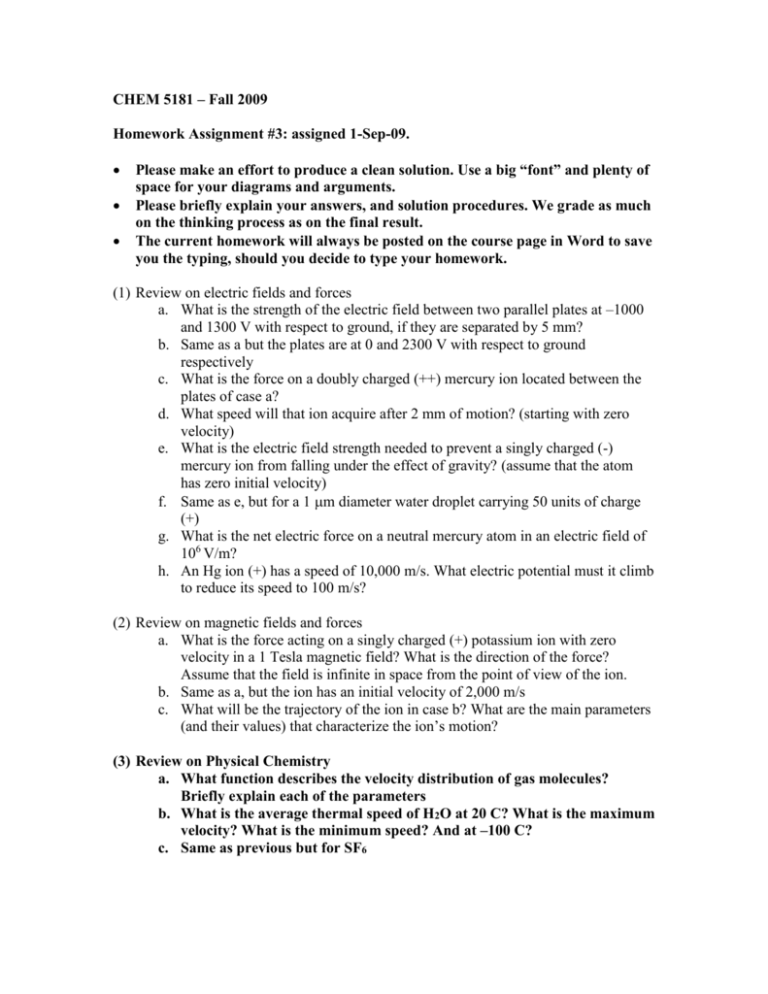
CHEM 5181 – Fall 2009 Homework Assignment #3: assigned 1-Sep-09. Please make an effort to produce a clean solution. Use a big “font” and plenty of space for your diagrams and arguments. Please briefly explain your answers, and solution procedures. We grade as much on the thinking process as on the final result. The current homework will always be posted on the course page in Word to save you the typing, should you decide to type your homework. (1) Review on electric fields and forces a. What is the strength of the electric field between two parallel plates at –1000 and 1300 V with respect to ground, if they are separated by 5 mm? b. Same as a but the plates are at 0 and 2300 V with respect to ground respectively c. What is the force on a doubly charged (++) mercury ion located between the plates of case a? d. What speed will that ion acquire after 2 mm of motion? (starting with zero velocity) e. What is the electric field strength needed to prevent a singly charged (-) mercury ion from falling under the effect of gravity? (assume that the atom has zero initial velocity) f. Same as e, but for a 1 m diameter water droplet carrying 50 units of charge (+) g. What is the net electric force on a neutral mercury atom in an electric field of 106 V/m? h. An Hg ion (+) has a speed of 10,000 m/s. What electric potential must it climb to reduce its speed to 100 m/s? (2) Review on magnetic fields and forces a. What is the force acting on a singly charged (+) potassium ion with zero velocity in a 1 Tesla magnetic field? What is the direction of the force? Assume that the field is infinite in space from the point of view of the ion. b. Same as a, but the ion has an initial velocity of 2,000 m/s c. What will be the trajectory of the ion in case b? What are the main parameters (and their values) that characterize the ion’s motion? (3) Review on Physical Chemistry a. What function describes the velocity distribution of gas molecules? Briefly explain each of the parameters b. What is the average thermal speed of H2O at 20 C? What is the maximum velocity? What is the minimum speed? And at –100 C? c. Same as previous but for SF6 d. What is the (approximate) average collision frequency between air molecules under ambient conditions in Boulder? What about pure SF6 at 1 Atm pressure? What about air at 10-5 mbar? e. What is the frequency and wavelength of a photon with an energy of 5 eV? Which region of the electromagnetic spectrum is the photon in? f. Same as previous but with 10 eV g. What is the speed of an electron with 70 eV of kinetic energy? h. What is the speed of an SF6+ ion with 70 eV of kinetic energy? How does it compare with the average thermal speed at room temperature (question c)? i. What is the definition of vapor pressure? How does it depend on temperature? j. What is the vapor pressure of water at 0C? at 50C? at 100C? (4) Review on fluid mechanics a. What is the definition of fluid dynamic viscosity? Of kinematic viscosity? What are their values for air and water at room temperature? How do they change with temperature? b. What is the equation describing the velocity profile of a fluid in a circular tube under laminar flow? c. What condition must be met for the flow to be laminar? d. Will the flow of He carrier gas under typical GC conditions be laminar? (20 cm/s, 250 m diameter column) e. What is the mass flow rate in the previous question? What is the volume flow rate? f. What will be the gas flow through a 100 m orifice which is exposed to the atmosphere on one side and kept to a pressure of 2 mbar through vacuum pumping? g. What will be the pumping speed (in l/s) needed to maintain the flow on e, at a pressure of 0.02 mbar? h. What will be the average molecular diffusion distance of argon atoms originating from a point source after 1 second in still air? And after one minute? (5) Review on math and statistics a. What is the definition of derivative? What is its geometrical interpretation? Can you estimate the derivative of attendance to the ASMS conference curve (slide 3 from the class notes) around 1980? b. What is the definition of an integral? What is its geometrical interpretation? What is the approx. integral of the ASMS attendance between 1980 and 1990? What is the meaning of this number? c. What is a probability distribution function? (define briefly) d. What is the probability that an ion will have energy larger than 7 eV, if the ion energy has a normal distribution with mean 5 eV and standard deviation 1 eV? e. What is the probability that an ion will have an energy of 0 eV in the previous question.
